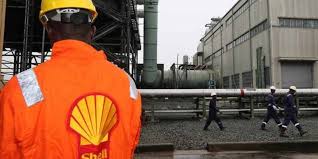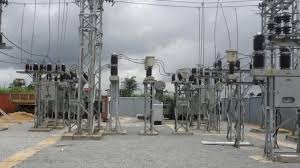Oil & Energy
2011And Nigeria’s Oil Industry
The year 2011 witnessed a very stormy weather that is yet to be cleared in the oil/gas and energy sector. Although the year came with great hopes and benefits as the President Goodluck Jonathan –led administration ensured that petroleum products and power supply were available for the people.
However, the controversial issue of removal of fuel subsidy beclouded scenario which is yet to be resolved or settled as Nigerians are not yet convinced as to how the funds saved from the subsidy will be used.
More than 50 years ago, Nigeria began to witness oil exploration and exploitation, which is being sustained till date. As the years roll by one is moved to reflect on the development of the oil and energy sector of the nation’s economy.
The uncommon fast movement or shift from agriculture to petroleum has enveloped the country and the gamble of the adventure is now paying off. The country is eventually achieving the great success of its life in the oil and energy sector. The satisfaction and fulfillment the nation is enjoying are mainly derived from oil and gas her God-given resources.
It is, however, one’s waning regrets that the sector is experiencing a seeming down shift due to managerial ineptitude. It was the oil and gas as well as energy success that made the country a cynosure of the world. The relative peace in the Niger Delta in 2011 created a suitable environment for oil companies to increase their outputs of crude oil production.
The year 2011 recorded some paradigm shifts from what obtained in the past. The Federal Government took measures toward the implementation of reforms in the oil-gas and power industries during the year.
In partnership with joint venture oil companies, there were renewed efforts at creating improved and sustainable community relations with host communities of oil-producing Niger Delta region to enhance oil production after the amnesty programme was put in place for former militants that terrorised the region.
For the first time, the government mustered courage and the will to privatise the power sector by handing over two power generation plants to private investors. It also went into some collaboration to explore development of the gas sector in a manner that would retain substantial value in the country. Although the impact of some of the decisions government took currently may not have been felt, operators are of the opinion that such steps were bold enough to bring a change in the oil/gas and energy sector.
Upstream
The inability of the National Assembly to pass the Petroleum Industry Bill (PIB) into law was a major setback in implementation of the reform in the upstream sector of the petroleum industry. Despite efforts of the executive arm of the government to persuade the National Assembly to pass the bill into law before the last general elections, the legislators sat on it and unit now, its passage is not in sight.
Most of the reforms expected in the upstream sector and their implementation processes are tied to the bill, hence further investments in the sector seemed to be at a standstill. Exploration activities last year were almost at zero level as international oil companies (IOCs) were skeptical over embarking on exploration as the PIB on passage into law might be very unfavourable since inputs in the bill became contentious, especially the fiscal regime and the issues on acreage development, which after several meetings between government and the IOCs, remained unresolved. The IOCs claim that the fiscal aspects of the bill, if passed into law in the current state, would make exploration and production business very unprofitable.
However, oil production improved last year on the heels of sustained amnesty programme of the government, rising to 2.4 million barrels per day, though the country was depending on importation of petrol. The development brought back Nigeria to its position as number one producer in Africa.
In 2011, Shell Petroleum Development Company (SPDC) embarked on routine maintenance of the Bonga Floating, Production, Storage and Offloading (FPSO) vessel, which is used to produce oil from shell’s biggest oil field, Bonga field in Oil Mining License (OML) 118 with daily oil production in excess of 200,000 barrels. The Bonga FPSO was shut down in compliance with the requirement for maintenance. Also last year, Shell Nigeria Exploration and Production Company Limited (SNEPCo) found the source of oil leak from its Bonga asset offshore Nigeria.
Shell successfully sold its asset in Oil Mining License (OML.40) out of four blocks, which have been put on sale since 2010. Elcrest, a consortium of two firms comprising Eland and Starcrest emerged the preferred bidder for the oil blocks. Sale of Blocks 30, 34 and 42 is still being discussed with potential buyers.
Last year, the Nigeria National Petroleum Corporation (NNPC) and its joint venture partners, Shell, Nigeria Agip Oil company (NAOC), Total and ConocoPhillips, agreed to resume the execution of Bisemi – Samnabri Utilisation and unit Operating Agreement (UUOA), which was originally signed 19 years ago. The MOU would serve as a boost to the Gas Revolution Agenda. This agreement represents a significant step in the drive to support federal government’s (gas based) economic development aspiration as well as gas supply plan to facilitate investment decision on Brass LNG. The handover of operatorship of Egbema, Egbema-West and Ugada fields to the Nigerian Petroleum Development Company (NPDC), a subsidiary of NNPC, was completed also last year. The move was designed to further build up capacity of NPDC as a national upsetream company.
Downstream
The downstream operation, particularly the products marketing sector was substantially stable as the government and other operators of the sector were able to sustain supply and check scarcity. Besides insignificant scarcity occurrence in the first quarter of last year, which did not last a day, the market was flooded with petroleum products, although almost 100 percent of the supply was import – dependent.
The independent Petroleum Marketers Association of Nigeria (IPMAN), a major stakeholder in the downstrcan operation, early last year, had a problem within itself and got factionalised. One group pulled out from the company, NIPCO, where it has equity stakes and chose capital oil and gas limited as its base for receipt of products and conduct of other transactions.
Contrary to reports that politically –induced violence and anticipated resumption of militant attacks might adversely affect oil production last year, NNPC ensured that oil and gas industry operations and oil output were stable and improved upon, shooting production up to 2.3 million barrels per day (bpd) after dropping to a low of 1.7 million bpd in mid – 2009.
A British High Court last year in London ordered the Shell Petroleum Development Company to pay compensation of more than $250 million ($410 million) to Bodo community in Rivers State after the company admitted liability for two oil spills in the community. Shell acknowledged that the two spills in 2008, were caused by operational failure.
In 2011, the statistician –General of the Federation said last year’s third quarter Gross Domestic Product (GDP) declined from 7.86 per cent in 2010 to 7.40 per cent and attributed the 0.46 per cent decline in growth to a fall in oil production by 0.34 percent in the third quarter as opposed to 5.08 percent in 2010.
Crude oil production with its associated gas component, for example, fell from 2.49 million barrels per day (mbpd) on average in the second quarter of 2011 to 2.36 mbpd on average in the third quarter. The drop in crude oil production in 2011 was as a result of operational constraints experienced by some of the major oil producers during the period under review.
In the third quarter of 2011, the organisation of Petroleum Exporting Countries (OPEC) agreed that first new production limit in three years in a deal that settled a six-month-old argument over output levels in Saudi Arabua’s favour. OPEC agreed a new supply target of 30 million barrels per day, which is roughly in line with current production.
The agreement caps output for all 12 OPEC members for the first half of the year, keeping supply near three-year highs, which is enough to build lean global inventories. When OPEC met in June last year, it failed to reach all agreement on higher supplies, leaving Saudi Arabia free to open the taps to compensate for lost Libyan supply.
Midstream
The Federal Government had in 2010 through NNPC agreed to partner with China State Construction Engineering Corporation (CSCEC), state governments of Lagos, Kogi and Bayelsa for the construction and operation of Greenfield Refinery in the three States. The refineries were designed to have a combined refining capacity of about 750,000 barrels per day, employ about 7,000 workers and planned to be jointly financed by NNPC, the state governments where they would be sited and the Chinese firms.
The government aggressively spearheaded moves for the take-off of the project in first quarter of last year but throughout the year, nothing was heard of the project until in October when the president in his Independence anniversary broadcast reiterated the federal government determination to build three new refineries. Considering the seriousness given to the project in 2010, which involved signing of MOUs and some milestones marked to be achieved within 2011, industry stakeholders and Nigerians were surprised that virtually nothing was done.
The existing refineries have been working, if at all, below 20 percent of installed capacities, although government sources said the four refineries work at 30 percent installed capacity. The private refineries including the Rivers State Treasure Oil Resources and the Amakpe refinery in Akwa Ibom State which were billed to come on stream last year had been in the cooler throughout the year.
Shedie Okpara
Oil & Energy
Nigeria Loses More Crude Oil Than Some OPEC Members – Nwoko

Nigeria’s losses due to crude oil theft has been said to be more significant than those of some other members of the Organisation of Petroleum Exporting Countries(OPEC).
The Chairman, Senate Ad- hoc Committee on Crude Oil Theft, Senator Ned Nwoko, made this known in an interview with newsmen in Abuja.
Nwoko noted with dismay the detrimental impact of the issue, which, he said include economic damage, environmental destruction, and its impact on host communities.
According to him, the theft was not only weakening the Naira, but also depriving the nation of vital revenue needed for infrastructure, healthcare, education and social development.
The Senator representing Delta North Senatorial District described the scale of the theft as staggering, with reports indicating losses of over 200,000 barrels per day.
Nwoko disclosed that the ad hoc committee on Crude Oil Theft, which he chairs, recently had a two-day public hearing on the rampant theft of crude oil through illegal bunkering, pipeline vandalism, and the systemic gaps in the regulation and surveillance of the nation’s petroleum resources.
According to him, the public hearing was a pivotal step in addressing one of the most pressing challenges facing the nation.
‘’Nigeria loses billions of dollars annually to crude oil theft. This is severely undermining our economy, weakening the Naira and depriving the nation of vital revenue needed for infrastructure, healthcare, education, and social development.
‘’The scale of this theft is staggering, with reports indicating losses of over 200,000 barrels per day more than some OPEC member nations produce.
‘’This criminal enterprise fuels corruption, funds illegal activities and devastates our environment through spills and pollution.
‘’The public hearing was not just another talk shop; it was a decisive platform to uncover the root causes of crude oil theft, bunkering and pipeline vandalism.
‘’It was a platform to evaluate the effectiveness of existing surveillance, monitoring, and enforcement mechanisms; Identify regulatory and legislative gaps that enable these crimes to thrive.
‘’It was also to engage stakeholders, security agencies, host communities, oil companies, regulators, and experts to proffer actionable solutions; and strengthen legal frameworks to ensure stricter penalties and more efficient prosecution of offenders”, he said.
Nwoko noted that Nigeria’s survival depended
Oil & Energy
Tap Into Offshore Oil, Gas Opportunities, SNEPCO Urges Companies

Shell Nigeria Exploration and Production Company Ltd. (SNEPCo) has called on Nigerian companies to position themselves strategically to take full advantage of the growing opportunities in upcoming offshore and shallow water oil and gas projects.
The Managing Director, SNEPCO, Ronald Adams, made the call at the 5th Nigerian Oil and Gas Opportunity Fair (NOGOF) Conference, held in Yenagoa, Bayelsa State, last Thursday.
Adams highlighted the major projects, including Bonga Southwest Aparo, Bonga North, and the Bonga Main Life Extension, as key areas where Nigerian businesses can grow their capacity and increase their involvement.
“Shell Nigeria Exploration and Production Company Ltd. (SNEPCo) says Nigerian companies have a lot to benefit if they are prepared to take advantage of more opportunities in its offshore and shallow water oil and gas projects.
“Projects such as Bonga Southwest Aparo, Bonga North and Bonga Main Life Extension could grow Nigerian businesses and improve their expertise if they applied themselves seriously to executing higher value contracts”, Adams stated.
Adams noted that SNEPCo pioneered Nigeria’s deepwater oil exploration with the Bonga development and has since played a key role in growing local industry capacity.
He emphasized that Nigerian businesses could expand in key areas like logistics, drilling, and the construction of vital equipment such as subsea systems, mooring units, and gas processing facilities.
The SNEPCO boss explained that since production began at the Bonga field in 2005, SNEPCo has worked closely with Nigerian contractors to build systems and develop a skilled workforce capable of delivering projects safely, on time, and within budget both in Nigeria and across West Africa.
According to him, this long-term support has enabled local firms to take on key roles in managing the Bonga Floating, Production, Storage and Offloading (FPSO) vessel, which reached a major milestone by producing its one-billion barrel of oil on February 3, 2023.
Oil & Energy
Administrator Assures Community Of Improved Power Supply

The Emohua Local Government Area Administrator, Franklin Ajinwo, has pledged to improve electricity distribution in Oduoha Ogbakiri and its environs.
Ajinwo made the pledge recently while playing host in a courtesy visit to the Oduoha Ogbakiri Wezina Council of Chiefs, in his office in Rumuakunde.
He stated that arrangements are underway to enhance available power, reduce frequent outages, and promote steady electricity supply.
The move, he said, was aimed at boosting small and medium-scale businesses in the area.
“The essence of power is not just to have light at night. It’s for those who can use it to enhance their businesses”, he said.
The Administrator, who commended the peaceful nature of Ogbakiri people, urged the Chiefs to continue in promoting peace and stability, saying “meaningful development can only thrive in a peaceful environment”.
He also charged the Chiefs to protect existing infrastructure while promising to address the challenges faced by the community.
Earlier, the Oduoha Ogbakiri Wezina Council of Chiefs, led by HRH Eze Goodluck Mekwa Eleni Ekenta XV, expressed gratitude to the Administrator over his appointment and pledged their support to his administration.
The chiefs highlighted challenges facing the community to include incessant power outage, need for new transformers, and the completion of Community Secondary School, Oduoha.
The visit underscored the community’s expectations from the LGA administration.
With Ajinwo’s assurance of enhancing electricity distribution and promoting development, the people of Oduoha Ogbakiri said they look forward to a brighter future.
By: King Onunwor

